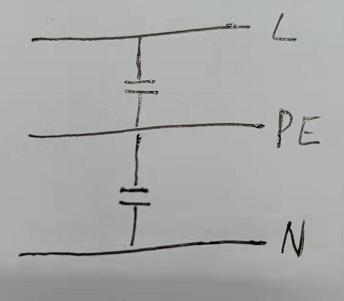Hi,
I have a battery storage system which is grid tied. This has been G98 registered. The battery has a grid tie and a UPS backup circuit.
The system works as expected, however when in UPS backup mode, I have noticed something that I need to clarify.
When in normal grid tied mode, the following voltages are recorded on the UPS output:
L-N = 230V
L-E = 230V
N-E = 0V
When in UPS mode, the following:
L-N = 230V
L-E = 130V
N-E = 130V
The manufacturer confirmed that when in UPS mode, a N-E link is made automatically and disconnected automatically. I have contacted them but being in China, they are slow to respond.
What I noticed, is that if you switch off loads on the UPS output, the voltage between L&E slowly increases to around 200V. I haven’t as yet tested to see if the same is apparent with N&E.
Any ideas? This is an inverter so I am unsure if this sort of reading/phenomenon is normal?
Thanks.


